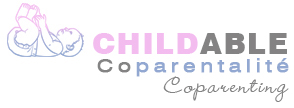Pregnancy and its Side Effects

Pregnancy is a significant life event that brings with it a cascade of changes, both joyous and challenging. For many women, the journey to motherhood is accompanied by a series of side effects that range from mild to severe. Knowing what to expect during pregnancy can help you prepare for the months ahead.
The First Trimester: A Time of Adjustment
The first trimester of pregnancy serves as a crucial phase of adjustment where expectant mothers witness their bodies embarking on the miraculous process of creating life. It’s during these initial twelve weeks that the body undergoes profound hormonal changes, which often manifest as the notorious morning sickness, a misnomer for the nausea and vomiting that can strike at any time of the day. This period is characterized by an increase in the production of hCG (human chorionic gonadotropin), progesterone, and estrogen. As these hormones surge, they support the pregnancy but also cause significant fatigue, a natural response as the body diverts energy to support the developing embryo. Women may also experience heightened emotional sensitivity and mood swings, a result of the hormonal symphony playing within. Breasts may become tender to the touch as they prepare for eventual lactation, and the increase in blood volume to support the fetus can lead to frequent urination. This trimester is also when the risk of miscarriage is highest, which, combined with hormonal shifts, can contribute to anxiety about the pregnancy’s viability. However, it’s a transformative time when the foundation for the baby’s future growth is laid down, encompassing the development of vital organs, the beginning of the heartbeat, and the initial formation of the skeletal structure. For many, the first trimester is both daunting and exhilarating as they navigate these changes with the anticipation of the new life growing within.
Hormonal Fluctuations and Emotional Changes
Hormonal fluctuations during pregnancy are like the ebb and flow of tides, profound and transformative, precipitating a spectrum of emotional changes that can catch many expectant mothers by surprise. The surge in estrogen and progesterone, which are essential for a healthy pregnancy, also bear the unintended consequence of emotional volatility, akin to an intensified premenstrual syndrome with potential peaks and troughs of mood swings. It’s not uncommon for pregnant women to experience a heightened state of emotional responsiveness, with tears and laughter often residing at the edge of the same moment. Anxiety may weave into their tapestry of daily experiences, as the reality of impending motherhood, with its responsibilities and uncertainties, looms closer. Some may grapple with prenatal depression, a less discussed but equally important mental health condition that requires attention and care. Simultaneously, the joy of expecting a child may intermingle with fears about the baby’s health, personal health, and the changes that parenthood will bring to current lifestyles and relationships. These emotional states are compounded by the physical demands of pregnancy, such as fatigue and changes in body image, which can further influence a woman’s psychological well-being. Yet, within this whirlwind of change, many also find a newfound sense of connection and purpose, a deepening bond with their unborn child, and a redefined sense of self that nestles within the heart of this profound life event.
How is sperm donation in the world
Physical Changes and Discomfort
Physical changes and discomfort are quintessential to pregnancy, painting a vivid picture of the body’s adaptation to nurture new life. As pregnancy hormones flood the system, they orchestrate a series of transformations and incite common discomforts. Breast tenderness emerges early as the breasts swell and gear up for milk production, often leading to a new sense of fullness or sensitivity. The surge in progesterone, while vital for maintaining the uterine lining, can slow down digestion, giving rise to constipation, and when coupled with the relaxing lower esophageal sphincter, it invites the burn of heartburn and the annoyance of indigestion. The expanding uterus, a growing home fitting for the developing fetus, exerts pressure on the bladder, resulting in an increased frequency of urination, while also stretching the abdominal skin to the potential emergence of stretch marks as silent badges of maternity. Blood volume and circulation boost to meet the demands of fetal nourishment, yet this can lead to varicose veins and a sense of heaviness in the legs. Ligaments stretch and joints loosen, preparing for childbirth, which can lead to the unsettling experience of pelvic and back pain. By the second trimester, the belly’s prominence becomes a tender declaration of the pregnancy, altering the center of gravity and inviting a recalibration of balance and posture. Meanwhile, skin may revel in the ‘pregnancy glow’ or contend with hormonal acne, and the hair might luxuriate in thickness or, conversely, become a subject to fall out in postpartum days. These physical states, often uncomfortable, sometimes disconcerting, are nonetheless transient heralds of the life-creating process, a testament to the body’s remarkable capacity to adapt and transform.
The Second Trimester: A Period of Growth
The second trimester heralds a period of profound growth and reprieve for many expectant mothers, often regarded as the golden phase of pregnancy. During this time, the tumultuous tide of hormones begins to level out, bringing about a renewed sense of well-being and energy. The baby, no longer an abstract concept but a growing entity, asserts its presence through the first flutters of movement, a heartwarming milestone for parents-to-be. This trimester witnesses the fetus’s rapid development, from the formation of distinct facial features to the fine details of fingerprints. As the once minute embryo transforms into a recognizable human shape, the mother’s body accommodates its insistent growth. The abdomen stretches outward, a visible celebration of the life within, and the uterine walls thicken and strengthen. The increased abdominal size may lead to a shifting center of gravity, causing backaches and posture adjustments. Leg cramps become more frequent as the weight of the womb presses on blood vessels and nerves. Skin stretches taut across the burgeoning belly, potentially etching the pink or silver lines of stretch marks, while an increase in melanin can cause the linea nigra and chloasma—marks of pregnancy’s hormonal influence. Despite these discomforts, many women find this trimester to be more comfortable, as the earlier symptoms of nausea and fatigue subside, allowing for greater mobility and the pursuit of prenatal bonding activities like ultrasound scans, which reinforce the tangible connection with the baby. It’s a time when the risks of early pregnancy complications decrease, and expectant parents often feel more confident in sharing their news with the world, embracing the visible and vital signs of their impending parenthood.
The Third Trimester: Preparing for Birth
The third trimester marks the final stretch of pregnancy, a time when expectant mothers are often immersed in a blend of anticipation and preparation for birth. The baby’s increased size means more pronounced movements that can be visibly seen rippling across the belly, and a kicking schedule that may disrupt sleep. The body prepares for labor by releasing relaxin, which softens the cervix and loosens the ligaments, occasionally leading to the waddle in a mother’s gait and an increase in back pain as the pelvis widens. Braxton Hicks contractions may begin as rehearsals for the real event, often causing confusion with their false alarm labor pains. Sleep becomes elusive, with the large belly making it hard to find a comfortable position and frequent trips to the bathroom interrupting the night. For many, this is also a period of nesting, where the urge to organize and prepare the home for the new arrival becomes a priority. Swelling in the feet and hands can become more pronounced, as the body retains more fluid to support the baby’s final growth spurt. Some women may experience a drop in fetal position as the baby moves into the pelvis, readying for birth, which can offer some respiratory relief but may increase pressure on the bladder. The third trimester is also when mothers are monitored for signs of preeclampsia and gestational diabetes, ensuring the health of both mother and child. Despite the physical demands and discomfort, there is a growing excitement and count-down to the day they will meet their child, coupled with an awareness of the imminent transformation of their identity and lifestyle as they step into the role of a parent.
Coping with Side Effects
Coping with the side effects of pregnancy often requires a blend of self-care, medical guidance, and lifestyle adjustments. Nausea, a common early symptom, can be mitigated by eating small, frequent meals and avoiding an empty stomach. Foods with ginger or peppermint, and acupressure wristbands, are also favored remedies. For heartburn, staying upright after meals, eating slowly, and avoiding spicy or acidic foods can provide relief. Adequate hydration and high-fiber foods alleviate constipation, while pelvic floor exercises can help manage frequent urination. To ease back pain, correct posture, supportive footwear, and exercises like prenatal yoga are beneficial. Sleep issues may be addressed with comfortable bedding, pregnancy pillows, and maintaining a cool, restful environment. Swelling can be countered by elevating the feet and reducing salt intake. Emotional side effects, such as mood swings and anxiety, call for open communication with support networks, and if necessary, professional counseling. Prenatal classes offer education and preparation for childbirth, fostering a sense of control and readiness. Amidst these challenges, it’s crucial for expectant mothers to monitor their health and the baby’s, with regular prenatal check-ups to catch and manage conditions like gestational diabetes or preeclampsia early. Importantly, finding joy in the journey, whether through bonding with the unborn baby, planning for the future, or simply taking time for personal interests, is essential. Coping with pregnancy’s side effects is as much about nurturing the mind as it is about caring for the body, paving the way for a healthy pregnancy and the anticipation of motherhood.
When to Seek Help
Knowing when to seek help during pregnancy is crucial for the safety of both mother and child, as certain symptoms can signal potential complications. Regular prenatal visits are essential for monitoring the progress of the pregnancy and the health of the fetus, but between check-ups, vigilance is key. Immediate medical attention should be sought for persistent severe headaches, vision changes, or swelling of the face and hands, as these may indicate preeclampsia. Vaginal bleeding or fluid leakage, severe abdominal pain, or significant changes in the baby’s movement patterns after the 28-week mark require urgent assessment to rule out preterm labor, placental issues, or distress. Consistent, painful uterine contractions before 37 weeks, a high fever, or a sudden increase in thirst and decreased urination could point to preterm labor or gestational diabetes, respectively. Difficulty breathing, chest pain, or severe vomiting and diarrhea are also red flags that necessitate immediate medical evaluation to ensure no threat to maternal or fetal health. Mental health cannot be overlooked; feelings of persistent sadness, anxiety, or thoughts of harm to oneself or the baby are just as important to address with a healthcare provider. The threshold for concern is lower for those with pre-existing conditions or pregnancy-related complications like gestational diabetes or a history of miscarriage, and they should maintain a lower threshold for seeking advice. Ultimately, intuition plays a role—any symptom that feels abnormal or worrisome to a pregnant woman is a valid reason to reach out to her healthcare team, ensuring that potential issues are addressed promptly and appropriately.
Conclusion
While pregnancy side effects are a common part of the experience, understanding them can alleviate concerns and help you enjoy this special time. Always consult with healthcare professionals to ensure the health and safety of both you and your baby.
